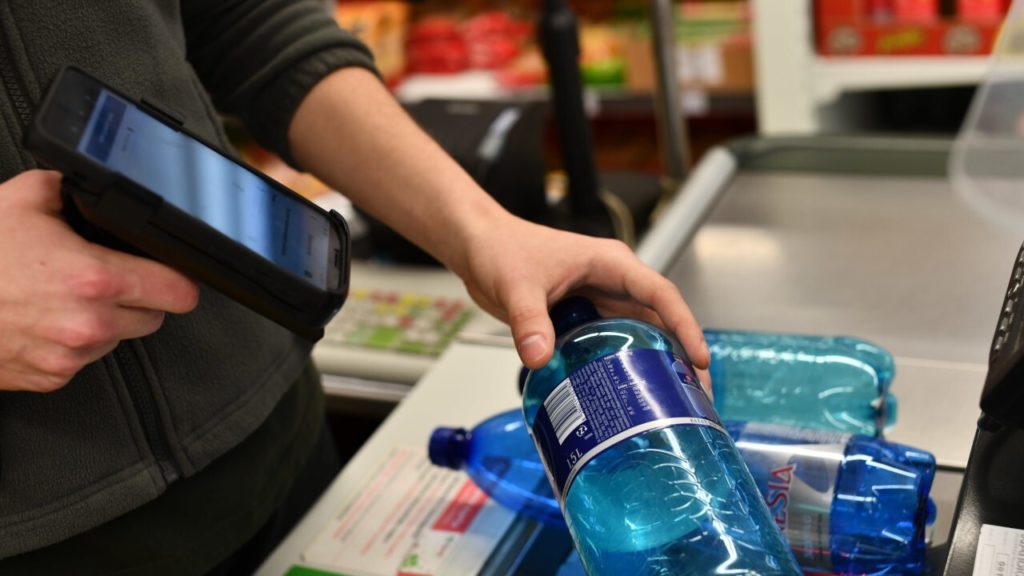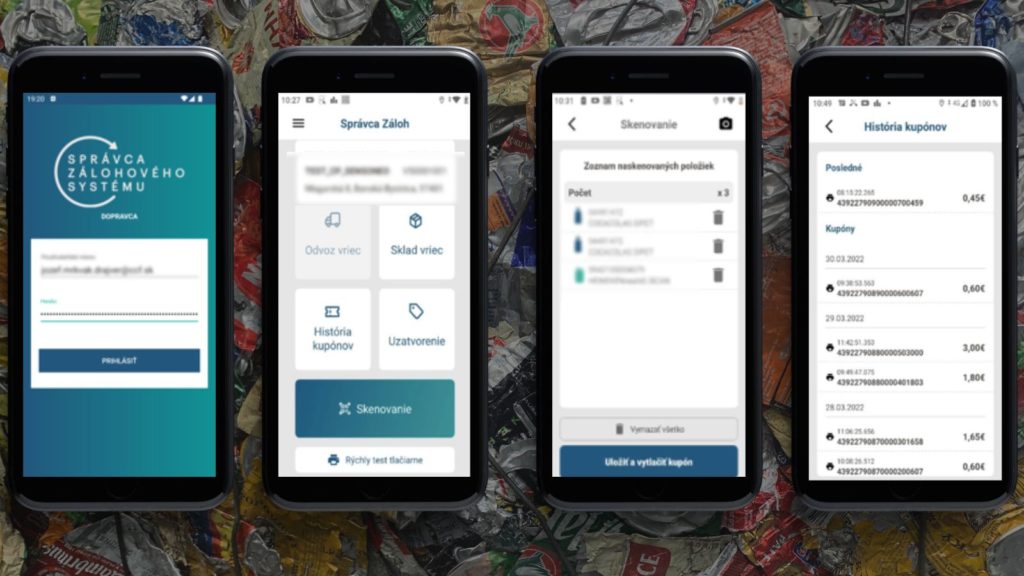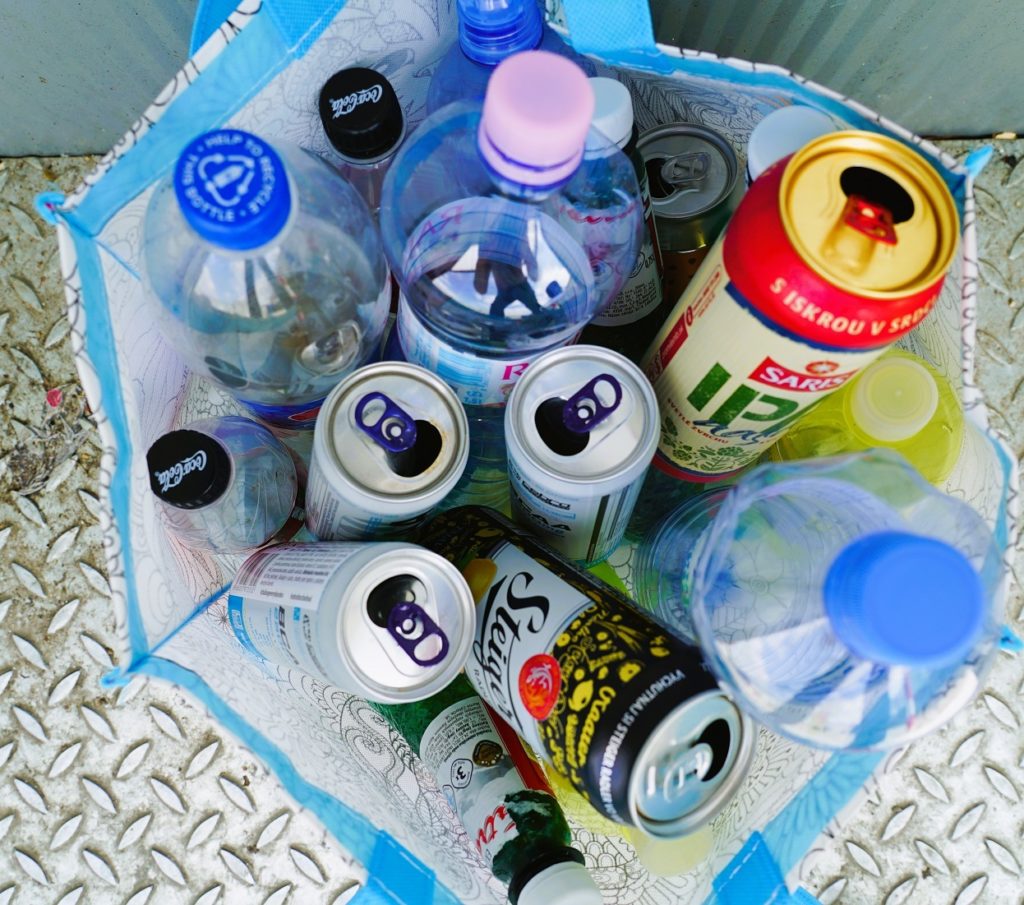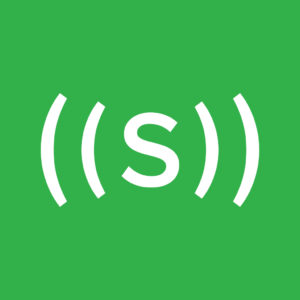Martin Halasz has worked in Sensoneo on the deposit return scheme project from the very beginning. After a successful launch of the Slovak DRS, his responsibility covered the distribution of handheld scanner sets for manual collection and providing and managing customer support to the retailers and shops that use them.

There are more than 3,000 collection points in Slovakia, and around 700 of them participate in the deposit refund system voluntarily through manual collection with handheld scanners. These are mostly shops in small villages, often in remote locations. Martin says that thanks to his customer support management role, he got to know a lot of small towns that he hadn’t heard of before, and one day he would like to travel Slovakia through all the manual collection points.
Manual collection with the help of handheld scanner sets was introduced in order to facilitate participation of smaller retailers in the DRS. Such a step increases their competitiveness without requiring them to purchase a reverse vending machine (RVM) that is both financially demanding and takes substantial space. Slovakia is unique in the fact that manual DRS works practically from the start of the system itself.

What are the handheld scanner sets and what are they for?
The scanner set is used for manual collection for shops and retailers that voluntarily join the deposit refund system. We distinguish between three types of deposit collection – manual, automatic and semi-automatic, and the scanner sets refer to the manual type of collection. They consist of a handheld scanner with a wireless Bluetooth printer. Those are the two main hardware components. The set also includes accessories such as protective glass, a protective cover, a handle, and a charging station.

Why do we need manual collection?
DRS in Slovakia is mandatory for shops exceeding 300 m2, however more than 60% of retailers participate in DRS voluntarily. A scanner set was proposed so that they do not have to purchase a relatively expensive and, moreover, a large RVM. Although of course, such an option exists and many retailers use it.
What was needed in terms of software and hardware equipment so that such a product could be used successfully?
Regarding the hardware part, in cooperation with Správca Záloh (DRS Administrator), we selected suitable components available on the market. Subsequently, Sensoneo specialists developed an Android based application compatible with the DRS portal developed by us. The scanner set falls into the whole complex scheme.
Could you describe how the whole process of returning the beverage container with the scanner set works?
The principle of collection from customer perspective is similar to the one with the RVMs: sustomer still needs to get to the dedicated collection point (retailer store) to deposit the can or bottle. The difference is that during manual collection, the customer hands the container over to the shop assistant, who uses a handheld scanner to read the EAN codes on the labels. The container shall not be compacted and the label with the EAN code of the product shall not be damaged. Returned containers are scanned on spot and further scanned and verified in the counting center of DRS administrator, therefore the requirement is set that only non-damaged containers are accepted.
The RVM has also other attributes of the container to verify, such as dimensions, width, height with and without lid, weight with and without the lid, or some tolerance of remaining liquid.
During the manual collection, the store assistant conducts a visual check on the container, verifying whether it matches the description of the scanned product provided within the mobile application. Eligibility of the particular product is verified by the mobile application matching the whitelist of approved products which are registered within the scheme.

When the customer hands over the containers, the shop assistant scans them and a list of EAN codes appears on the display. Afterward, the shop employee puts the containers into plastic bags, PET bottles and cans separately. Then they save and print the voucher. Detailed voucher data are stored in the DRS system for the purpose of further operational tasks.
Customers can use the voucher when paying in the store where they returned the beverage container. The voucher is not tied to a specific day, so if you forget to use it, you do it next time you go shopping. The vouchers are however redeemable only at the shop which issued the voucher.
The retailer divides the PET bottles and cans into plastic bags. What is the capacity of the bags and what is the next step?
TThe DRS operator set the capacity of the bags based on average attributes and practical experiments during DRS implementation phase. At the moment the capacity is 80 PETs per bag or 250 cans. This is parametrizable within the system, but represents the limitation for the software to enforce the bag closure to prevent bag overloading. When the limit is reached, the app will ask the shop assistant to close the bag.That needs to be done both physically and software-wise. Otherwise, the scanning cannot continue.
Software closure means that the worker clicks “close the bag” in the app, and the app will ask to scan a one-time unique seal, also with a unique barcode, which will be placed on the bag. The bag is pulled, the seal is scanned, and the given bag is closed in the system. The information is sent to our software system, the backbone of the whole DRS. It contains data on what kind of bag it is, where it is located, which seal, and what exactly is inside. Thanks to several unique elements, the system is protected against frauds.
The limits are set by the system, but the shop employee can safely close the bag earlier when they consider it appropriate – if the bag is full earlier or for operational reasons. Closing the bag in such cases is called forced closure.
How often are the full bags picked?
The collection is planned dynamically, based on number of full bags at collection points. Sensoneo take back system automatically triggers orders based on minimum bag volume per pick-up and DRS operator logistics department plans the dynamic routes to the collection points on daily basis. Software assists them to record the orders, merge them into routes and calculate the most optimal route for the truck. The logistics processes and strategy is adjusted based on seasonal factors and growing collection demands.

What is the motivation of retailers to engage in manual collection?
Everyone who has this manual collection joins the system on a voluntary basis, as the obligation arises from 300 m2 of shop area. The motivation for small businesses is mainly to providing better service to their local customer and prevent losing these customers to bigger supermarket chains. The DRS operator’s target is to bring the DRS closer to people. When the customer goes to return the beverage containers, they usually also do the shopping and vice versa. Shops want to accommodate to customers by allowing them to return the containers. Especially in smaller villages there is often only one small grocery shop and the customer would otherwise have to go to a larger city or neighboring village to return the cans and bottles. As a result, these small stores could lose customers. The second motivating factor is financial, as the DRS administrator pays a handling fee to the collection points.
Where can retailers order a scanner set? How can they apply to be involved as a collection point?
This process starts with registration. Everything that falls into the deposit system must be registered, i.e. the producer, every single packaging, retailer, or collection point. When the facility decides they want to be a part of DRS, they open the DRS administrator website, follow the instructions, and fill out the contract online. If the Administrator approves it, this collection point will already appear in the system, and information about their account will be sent to them. There is only one scanner set on the market verified by the DRS Administrator and retailers can order it on the Sensoneo website.
After ordering from our e-shop, the entire set comes to the customer in so-called kiosk mode. All the shops have to do is to connect the set to a data connection, where there are two options: SIM card with data or WiFi. Subsequently, the user logs into the app as we know it from any other mobile app, enters the user name and password and the system automatically logs them into the approved collection point.
Tutorials and instructions are provided on two levels. As the hardware supplier, we provide the user manual and everything necessary for the proper functioning of the scanner set. The DRS administrator also sends instructions regarding the deposit return system itself, in which the entire process is described (e.g. closing the bag, etc.).
In deposit return scheme, there is the relationship between the collection point and the DRS administrator. The role that Sensoneo plays is that we are suppliers of hardware for a specific customer, but also of the whole software system that we provide for the DRS Administrator. This is why when some issue arises that is connected to functioning of the scanner, or the shop wants to resolve a complaint, they contact Sensoneo.
What is the experience with scanner sets, are they easy to use?
The scanner comes to the customer in the so-called kiosk mode, which means that the user cannot do almost anything with the device. They do not need to configure it, it’s easy to use and user manuals are available as well.
With this setting, we eliminate accidental errors like when someone presses a button by mistake, turns off WiFi, and so on. In case of any problem, the retailer will call us, we will connect remotely and, if possible, we will correct the error. Improper handling of the set can in worse case lead to data loss, which is why the set is in kiosk mode and in case of technical issues, our assistance is required.
How does customer service work? Can problems be solved remotely, or is on-site support necessary?
The customer, i.e. the retailer, can contact us by e-mail or directly on the customer line that was set up for these purposes. It works 12/7, including weekends and holidays from 8 am to 8 pm. If it cannot be solved remotely, a technician can be arranged.
The customer service will be strengthened soon, with more branches across the country, so the in-person support will be improved as well.

Can you share some memorable customer support stories?
I have one that is truly unique. I was just returning from a holiday in the east of Slovakia and I was on duty. I received a call from a shop assistant in a small village near Prešov. I looked at the sign of the village we were just passing, and by lucky chance it was where she was calling from! So I told her to wait a minute and I will come to solve the problem in person. I was there literally in a minute. Of course, the lady was absolutely stunned by the speed of the customer support.
Customer support brings interesting situations, especially positive ones. One of them happened in a grocery store where the shop assistant recognized me by my voice, as I had talked to her on the phone as customer support at some point in the past.
One senior representative of a retail branch was very dissatisfied with the operation of the manual collection, but when I came in person, we eliminated the problem, we talked, and since then the communication has been on a completely different level. Providing customer support is often not about complex technical solutions, but about a human approach.
What are the most common reasons clients call?
Often these are simple things that have nothing to do with the set itself, but we can solve the problem. For example, entering the wrong login name, password, and similar issues. Then there are questions directly about the depositing, for instance, payment dates, system operation, etc., those we will forward to the DRS Administrator.
Problems that are actually related to the manual scanner or component failure are not many, most of them are system based that can be solved remotely on the call or minimal failures on the components which were solved promptly by their replacement.
How many calls do you get a day?
There were about 1,000 phone calls last year, while not every day is the same. Tuesdays are usually the busiest, weekends the least. Mornings tend to be the busiest time, and then after the lunch break there might be some calls. We do not receive many calls in the evening.
Final question: how many collection places use the scanners? Have we already reached the limit when retailers don’t order new ones?
In total, there are more than 3,000 collection points in Slovakia, of which approx. 700 use these handheld scanners. This number is still growing as shops and stores see the benefit of participating in the Deposit Refund System.




